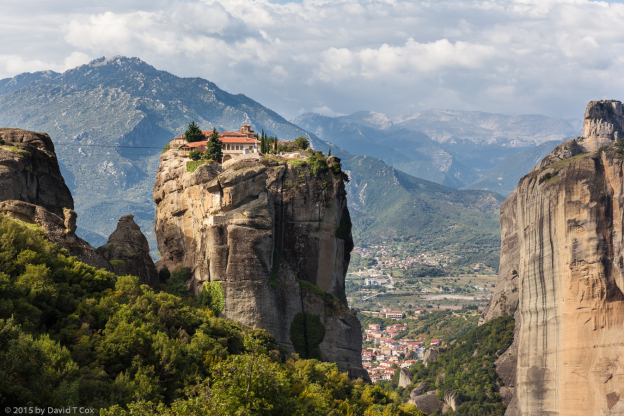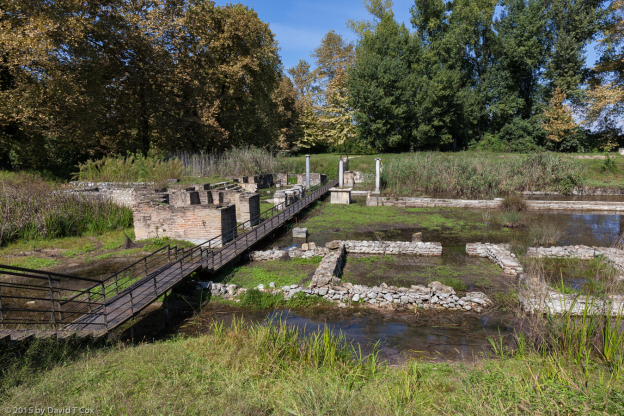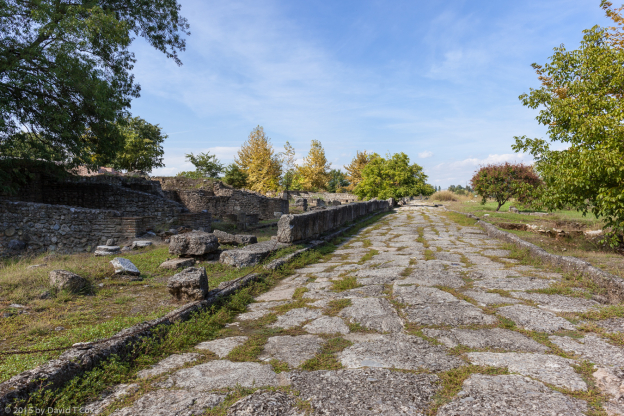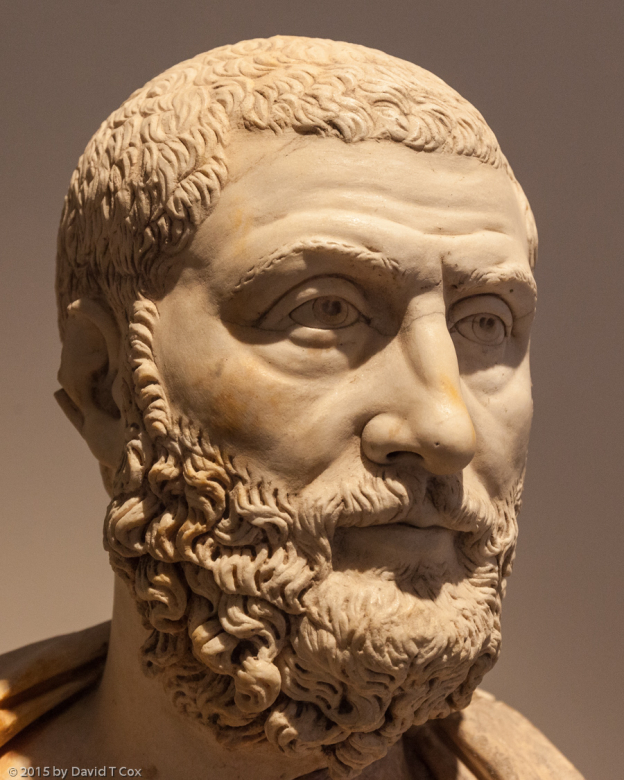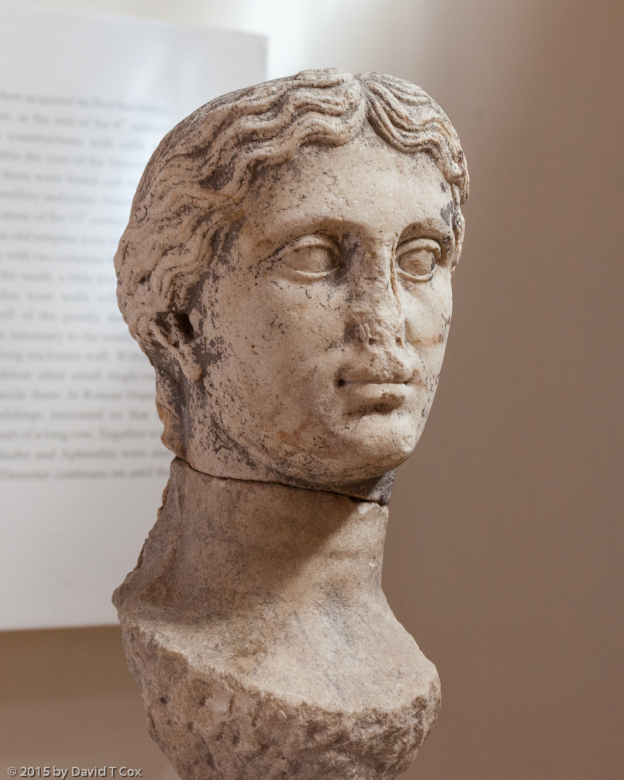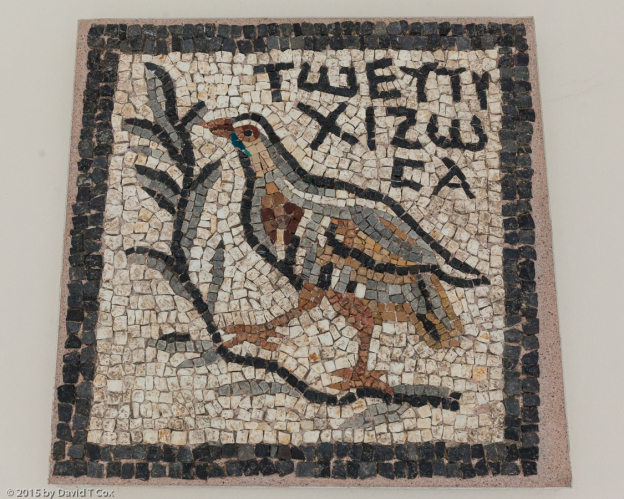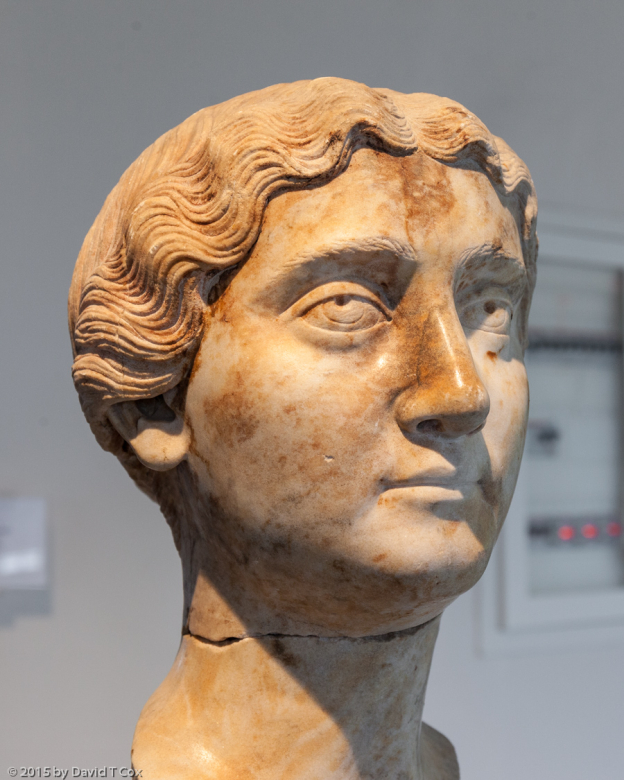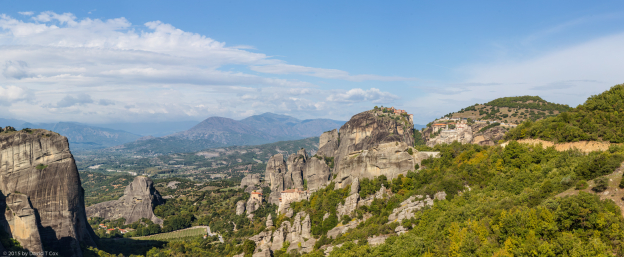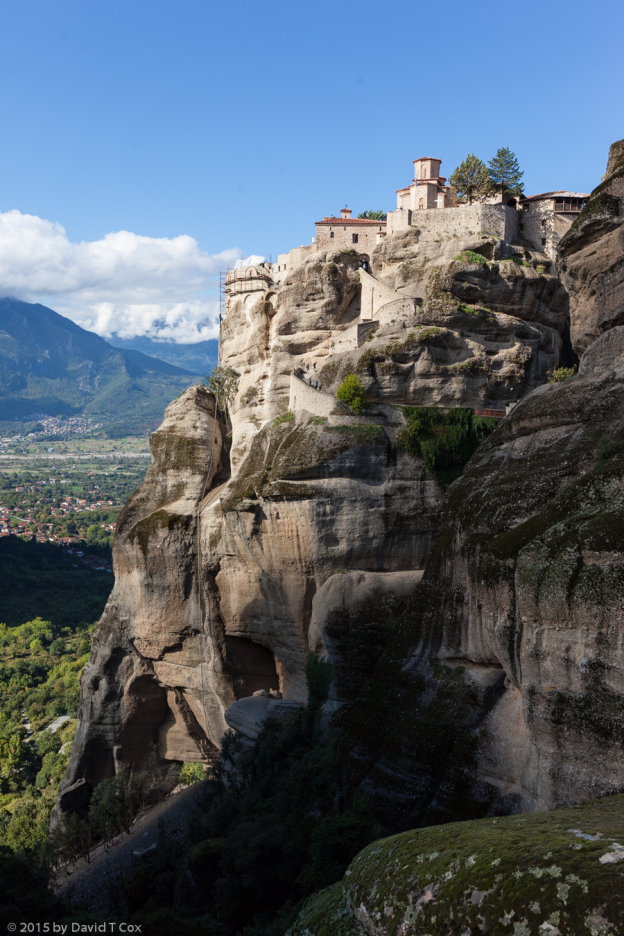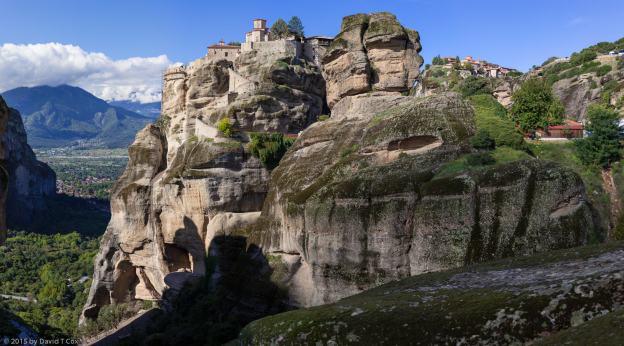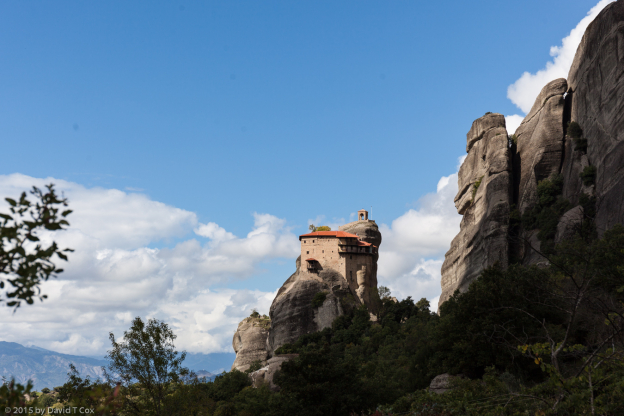All Photos Are Below the Travelogue Text
Click on Any Photo To Open Slide Show
To print the travelogue, right click anywhere on the page. Choose "Print" from your browser dialog box. You can choose Save to PDF in the browser print window.
Share your thoughts.
Email Dave - coxdavid55@hotmail.com
Hello again. I stayed in Thessaloniki almost a week longer than anticipated because of the loss of my wallet with 2 debit cards. It took 10 days to get both cards replaced, and a pin number for just one of them to allow for ATM withdrawals. The other pin should be available in a few days. Unbelievable – about 2 weeks, and with Ally Bank, over $200 in international phone charges, to get replacement debit cards with pins.
While extending my stay in Thessaloniki I spent a fair amount of time further visiting the Byzantine churches with frescoes and old mosaics.
On Saturday a week ago I traveled by bus from Thessaloniki to the village of Litochoro, set just a few kilometers upslope from the Aegean Sea on the eastern foothills of Mt. Olympus. Immediately above Litochoro opens the steep and awesome Epinea Gorge which splits the eastern face of Mt Olympus. On clear sunny mornings, looking west through the gorge, are the 3 main stony peaks of Mt Olympus, rising well above tree line. The more spectacular is Stefani, at just over 9,500 feet the third highest, which forms the top back of a giant bench known as the “Throne of Zeus.’ On the left side is the second highest peak, Scolio, just 6 feet higher than Stefani. Between the two aforementioned is Mytikas, the highest peak of Mt Olympus, just 30 feet higher than Stefani,. the Throne. By late morning, even on clear days, the clouds form to cover the high peaks.
Just 10 kilometers north of Litochoro is the little village of Dhion, beside which sits the ruins of ancient Dion; I took a taxi to Dion my first afternoon. Dion was first established around the 6th Century BC, next to the ancient oak grove and springs which form the Macedonian Kingdom Sanctuary of Zeus Olympus. This was a very sacred site to which all Macedonian Kings came, including Philip II and Alexander the Great, to make sacrifices before their great military exploits. The ancient city lies along a great paved causeway which runs north-south, along both sides of which lie ruins of Hellenistic, Roman Period and very early Byzantine workshops, villas and baths. The city was a major center from the mid-4th century BC to the 4th century AD. The Great Bath House and many villas contain wonderful floor mosaics. At the west wall of the city a late 4th century AD Basilica was built shortly before an earthquake destroyed the city. South of the city walls lie multiple Sanctuaries dedicated to various gods. The original site was for Zeus Olympus, but the oldest remaining ruins are the 6th century BC ruins of the Sanctuary of Demetrius. Also here are the Roman period Sanctuaries of Isis and Zeus Hypsistos. Further south of the city walls are the foundations of the Hellenistic period theater and a small Roman period theater. The site is filled with water from flooding springs and is much overgrown with tangles of raspberry bushes and great oak trees.
In the middle of the modern village of Dhion is the Dion Site Museum, small but with a delightful collection of marble statuary and cemetery markers from the ancient city and the various sanctuaries surrounding it. Here also is displayed the only remains ever found of the ancient bronze musical instrument called the hydraulus, a 1st century predecessor of the pipe organ.
The following day I hiked a few kilometers west of Litochoro up into Epinea Gorge on the trail which ultimately leads to the top of Mt Olympus. The trail was rocky and a very steep climb for an hour, but provided spectacular views up the canyon and out to the sea to the east. At several points the trail passed through very thick dark oak forest, and then would emerge climbing rocky outcroppings over the canyon.
From Litochoro I traveled on the 6th by train to Kalambaka – the first train, which I caught at the little Litochoro Beach train station, was quite new and clean, with few passengers. At one station the train took an unscheduled 15 minute break for everyone, including engineer and conductor, to get off and smoke cigarettes. At a track junction in Paleofarsalo I changed trains to a much older, dirtier and more crowded one heading west to Kalambaka. All in all, travel by train, at least for longer trips, seems far preferable to bus, as one can move around and see the sights from both sides. I think the trains are faster as well, particularly with tunnels through all the hills as opposed to winding roads. Of course, they don’t cover most of the routes I wish to take. From Kalambaka I took a taxi just the couple of kilometers to the neighboring village of Kastraki, where I am in a delightful hotel called the Doupiani House, with views of the expanse known as The Meteora.
Kalambaka sits at the southeastern base, and Kastraki the southwestern base, of “The Meteora” – an unearthly site. Along the foothills rising northward to a small mountain ridge, and encircling a couple of valleys below the ridge, rise mighty, grey rock pillars, towering hundreds of feet into the sky – sheer cliffs on all sides. Perched on the sides or tops of some of the pillars are monasteries and convents dating from the 14th century. Hermits first came and lived in caves up in the pillars, where eventually as many as 24 monasteries were constructed. Today, six monasteries and convents remain somewhat active, with resident monks and nuns, who seem to spend their days dealing with the masses of tourists who come by the busloads. Each monastery charges a 3 Euro entrance, and looking at the numbers of visitors, a quick calculation suggests they no longer need to sustain themselves by donations. The Ayios Triadhos (Holy Trinity) Monastery famously starred in an awesome aerial scene in the James Bond movie “For Your Eyes Only.” I have always remembered that scene and wished to see the actual site – mission now accomplished after 34 years (see photo at top of this page, or below in slide show).
A paved road, some 15 kilometers in length, winds through the pillars and up the mountain, and provides access to the “entrance” ways to each monastery. “Entrance” is a euphemism for the point at which one leaves the paved parking area and starts toward the monastery. All but one require a steep climb (mostly steps cut into the sides of the pillars) to reach the actual entrance to the structures. Two require a long descent to a bridge connecting the mountain to the pillar, followed by a steep climb up steps to the actual monastery. Over a two day span, I took the local bus each morning to the top points of the road, first at the eastern end, and the next day the western. From these points, with perhaps 18 kilometers of walking and 1200 feet of climbing I visited each of the 6 structures. All contain courtyards around which are arrayed the living quarters. Near the center of each property lies the two-chambered chapels, which have all interior walls and ceilings completely covered with fabulous 15th and 16th century frescoes, depicting various scenes of the saints’ lives, and multiple depictions of saints in the process of being martyred. Every chapel, over the door from the outer to inner chamber, contains a scene, from roof to floor, of judgement day, with people lined up before the scales of justice, and to the right side scores of people being cast into the mouths of the monsters of Hell. Unfortunately, at least for me, no photography is allowed inside the chapels (I suppose either for religious reasons or, more likely, because camera flash would quickly deteriorate the delicate colors of the age-old frescoes).
I hiked all of the roads between the monasteries, and some trails between the Meteora pillars, looking for vantage points for the exquisite panoramic views – sometimes waiting for the sun to appear through holes in the clouds to try to capture the ethereal quality of the scenes.
With my hiking and walking I should be losing weight. I cannot weigh myself, but it seems clear I am gaining girth. Apparently the food agrees with me; I think I am eating way to many dishes of lamb chops, roasted pork chunks, Greek sausages, fried calamari and tsatziki (cucumber and yogurt dipping sauce), or perhaps it just is the quantities of red wine and beer – well – maybe it’s both.
Tomorrow I head southeast for a long travel day, 3 bus changes, to Delphi, the site of the ancient Oracle. Later. Dave
- Sanctuary of Isis, Roman Imperial Period, Dion, 6th C BC – 4th C AD, Greece
- Main Road 4th C BC, paved in 3rd C AD, Dion, 6th C BC – 4th C AD, Greece
- mosaic floors of Great Baths late 2nd C AD, Dion, 4th C BC – 4th C AD, Greece
- closeup of bust of Hermaic stele of Erennianos, early 3rd C AD, from Great Baths, Dion Archaeological Museum, Greece
- bust of Demeter from Sanctuary of Demeter, from 6th C BC, Dion Archaeological Museum, Greece
- mosaic depicting grouse w inscription “for lucky Zosas” from House of Zosas, 2nd C AD, Dion Archaeological Museum, Greece
- portrait of Faustina the Yunger, wife of Roman emperor Marcus Aurelius, from Villa of Dion Archaeological Museumysos, 2nd C AD, Dion Archaeological Museum, Greece
- peaks of Mt Olympus above Enipea Gorge, from Litochoro, Greece
- Litochoro church on town square at dinner time, Greece
- Ayios Triadhos Monastery, Meteora, above Kalambaka, Greece
- Nikolaou, Roussanou, Megalou Meteorou & Varlaam Monateries (L-R), Meteora Panorama 5, Greece
- Varlaam Monastery, Meteora, Greece
- Varlaam Monastery, Meteora Pano 9, Greece
- Varlaam Monastery, Meteora, Greece
- Varlaam Monastery, Meteora, Greece
- Roussanau Nunnery, Meteora, Greece
- Nikolaou Monastery, Meterora, Greece
To print the travelogue, right click anywhere on the page. Choose "Print" from your browser dialog box. You can choose Save to PDF in the browser print window.
Share your thoughts.
Email Dave - coxdavid55@hotmail.com
